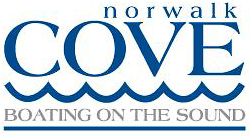Summer Fog - Where Does It Come From ?
June 17, 2015 So you will no longer be in a fog.... (sorry) For There are different types of fog, which essentially is a cloud on the ground which reduces visibility to less than 1km. fog to form, the basic requirements are moisture in the air (the closer to 100% humidity the better) and the air near the ground must be cooled to within 5 F (3 C) of dew point (the temperature to which air must be cooled in order for water vapor in the air to condense to liquid water). When the air near the ground cools to dew point, the water vapor in the air will become visible as fog in the air or dew on the ground. During the summer when the sky is clear and the humidity is near 100 %, fog will form. There must also be condensation nuclei (something onto which the water can condense). Condensation nuclei can be dust particles, aerosols or pollutants to which the additional moisture will condense onto when the air is saturated.
Fog often forms after sunset when the air begins to cool and condensation replaces evaporation. Air cools best with clear skies, as there are no clouds to trap the heat. Fog can also form at lower humidity levels if there are high levels of airborne nuclei, especially if it is something such as salt.
During fall and early winter the most common form of fog is Radiation Fog. This type of fog forms when the land cools after sunset by radiating the heat up into the atmosphere. The air must be calm and the skies clear (as the cloud cover will trap heat in the atmosphere). When the ground finally cools, it causes condensation in the air above it. The more calm the air, the closer to the ground fog will sit, often only a few feet deep. Air movement will generally produce a thicker fog. In the late winter and early spring boaters are more concerned with Advection Fog caused by relatively warm, moist air flowing over a colder surface. This is especially true after a cold spell when the ground is cold or there is lying snow.
To track the dew point in Norwalk, use the weather station at Norwalk Cove. See it.... HERE
.Capt. Rick Delfosse
Rick is a Coast Guard captain, the editor of Harbor Talk Weekly, a National Safe Boating Council close-quarters boat-handling and open water boat handling instructor, Connecticut and New York certified safe boating instructor and a US Sailing-certified instructor. He also conducts on-the-water courses and classroom seminars on coastal cruising and boating skills. The owner of a 43-foot pilothouse cutter and an Aquasport powerboat, he has extensive cruising and one-design, coastal and offshore racing experience.
During the summer when the sky is clear and the humidity is near 100 %, fog will form. There must also be condensation nuclei (something onto which the water can condense). Condensation nuclei can be dust particles, aerosols or pollutants to which the additional moisture will condense onto when the air is saturated.
Fog often forms after sunset when the air begins to cool and condensation replaces evaporation. Air cools best with clear skies, as there are no clouds to trap the heat. Fog can also form at lower humidity levels if there are high levels of airborne nuclei, especially if it is something such as salt.
During fall and early winter the most common form of fog is Radiation Fog. This type of fog forms when the land cools after sunset by radiating the heat up into the atmosphere. The air must be calm and the skies clear (as the cloud cover will trap heat in the atmosphere). When the ground finally cools, it causes condensation in the air above it. The more calm the air, the closer to the ground fog will sit, often only a few feet deep. Air movement will generally produce a thicker fog. In the late winter and early spring boaters are more concerned with Advection Fog caused by relatively warm, moist air flowing over a colder surface. This is especially true after a cold spell when the ground is cold or there is lying snow.
To track the dew point in Norwalk, use the weather station at Norwalk Cove. See it.... HERE
.Capt. Rick Delfosse
Rick is a Coast Guard captain, the editor of Harbor Talk Weekly, a National Safe Boating Council close-quarters boat-handling and open water boat handling instructor, Connecticut and New York certified safe boating instructor and a US Sailing-certified instructor. He also conducts on-the-water courses and classroom seminars on coastal cruising and boating skills. The owner of a 43-foot pilothouse cutter and an Aquasport powerboat, he has extensive cruising and one-design, coastal and offshore racing experience.
Private Sessions – On-the Water – On your boat
Contact Capt. Rick
rick@rdelfosse.com 203-216-7800
.Categories: None
